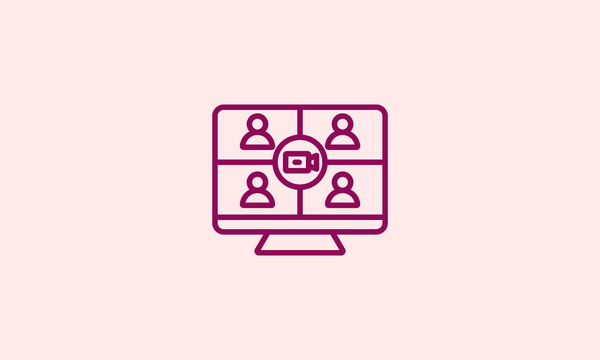
Webinar: How Does the Federal Budget Approach Digital Nation-Building?
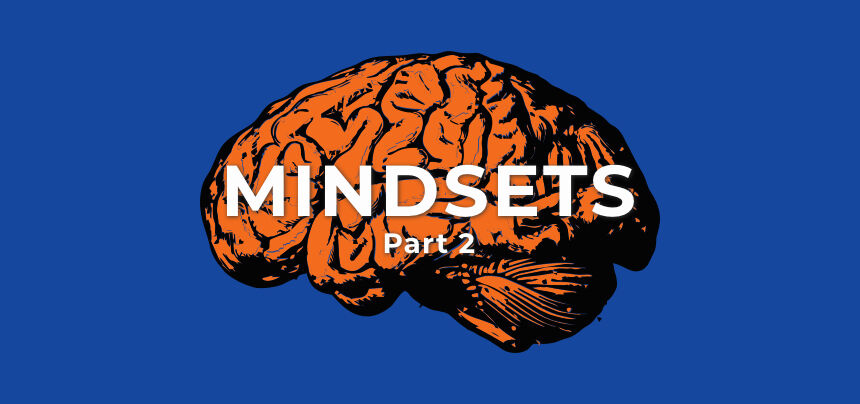

Christina Lanning
March 9, 2021
In November 2020, our fellowship team (comprised of a product manager, Heshan Modaragamage; a developer, Korhan Akcura; and a UX designer, me) started work on supporting the development of a more member centric transition experience for Canadian Armed Forces members. To learn more about the fellowship and our project, please visit my colleague Heshan Modaragamage’s blog post. To learn more about my experience with mindsets, please see part 1 of this blog: Goodbye personas! How mindsets can help you build empathy and reduce bias.
The Code for Canada fellowship program is no longer active. To learn more, visit our fellowship yearbook.
Mindsets are a powerful tool. Like personas, they can be used to help stakeholders visualize and empathize with your user, as well as to map users’ experiences and identify pain points. However, I found that mindsets provided me with a deeper understanding of the user, how they think and feel, as well as more empathy for them.
When learning to use a new tool, it can be hard to know where to start, and mindsets are no exception. As such, below are the steps I took to create the mindsets for our users: members transitioning out of the Canadian Armed Forces (CAF) to civilian life.
Mindsets have three parts:
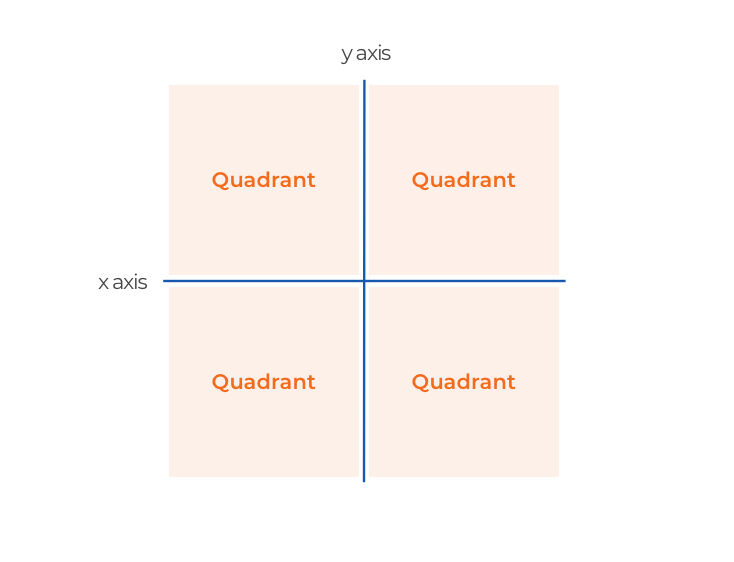
The first step we took was to learn about our users: transitioning CAF members. We consulted with various subject matter experts (SMEs) that support member transition, including Canadian Armed Forces Transition Group (CAF TG) team members, Veterans Affairs Canada (VAC) employees and other individuals with insights at the Department of National Defence. In addition, we also completed secondary research.
As a result of our learnings, we felt that we had a good understanding of the various members’ mindsets. From there, we created proto-mindsets - a hypothesis based on research and assumptions of what we believe the mindsets will be. Developing proto-mindsets helps to identify interview criteria and develop interview questions.
Mindsets have two axes, representing two sets of traits demonstrated by your users. Each set of traits is a spectrum with two opposing attitudes.
Potential traits should be identified and collected through initial research. While many traits may fit your users, it was helpful for me to consider our context; our goal is to create a digital solution to support members transitioning out of military service. We identified how self-sufficient (or reliant on others) and how planful (or reactionary) members are as it relates to their transition.
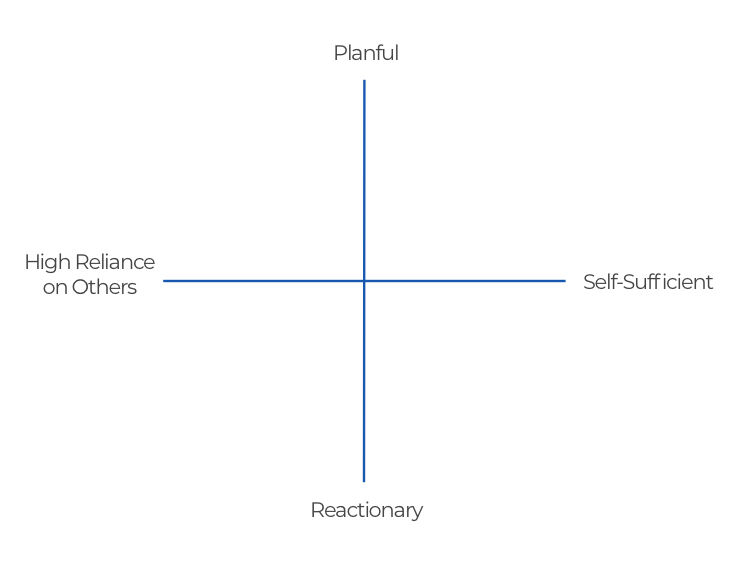
Other ideas for traits are: resilience, confidence, adventurousness, detail orientation, openness, and more. Assigning a trait can be challenging and you may have to try a few before you find the right ones for your users.
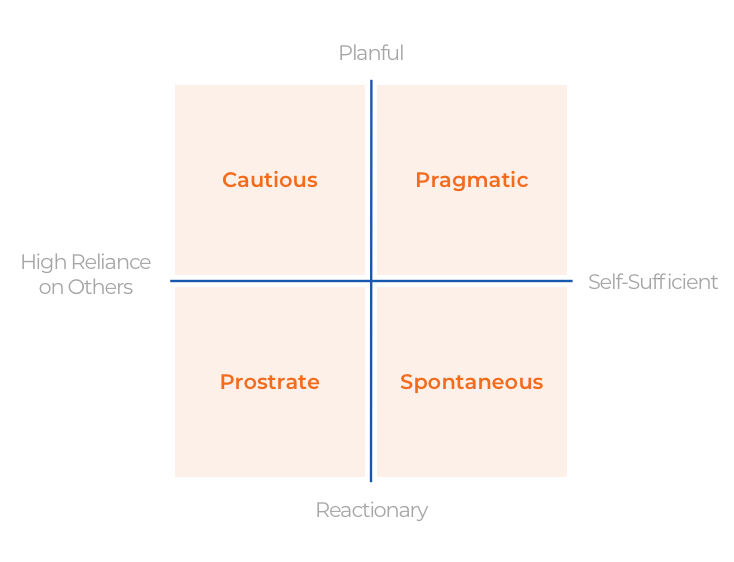
Note: For someone that has not worked with mindsets before, I admit that I did find this and the following step challenging. These steps were challenging in part because I had to push myself to move away from the mental model of personas. Additionally, I had to make a lot of assumptions about the members experience, needs and approach at that stage. In retrospect it may have been easier and more effective to complete steps 3 and 4 after completing the veteran consultations and plotting them on the matrix, as it would have meant fewer assumptions and greater confidence while naming and summarizing the mindsets. In the future I would consider jumping to step 5 and completing this and the next steps after plotting members.
With the research and template in hand (provided to me by the Eman El-Fayomi at the Canadian Digital Service), I set out to develop a hypothesized overview of transitioning members’ mindsets. For this project I decided to focus on transitioning members’ needs, behaviours, beliefs and attitudes. Depending on your project or needs, there may be other areas you wish to explore with your mindsets, including habits or approaches.
The template provided the following sections to help develop an insightful mindset:
Here is an example of the mindset for the pragmatic transitioning member:
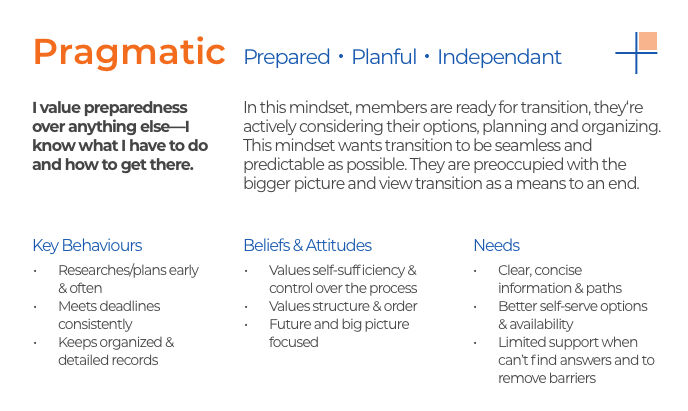
From the proto-mindsets and research, we developed the interview criteria for transitioned members and questions we wanted to ask them to understand their experience.
The intent of this initial consultation with veterans was to provide us with a high level understanding of the journey they took during transition; as such, we only spoke to six members for this initial round of consultations. We also anticipated that we would need to perform more interviews once we targeted specific products or features, allowing us to further refine and iterate on the members’ mindsets going forward.
Once we synthesized the veteran consultation insights, it was time to plot them on the matrix. But how?
In the limited available literature, no one explained how they did this. I could have made a good guess as to where each individual should be plotted, but I felt a bit more rigour was required. I decided to create a rating scale for each axis describing various attitudes, behaviours and needs:

This table criteria allowed me to confidently rate and plot the transitioned veterans:
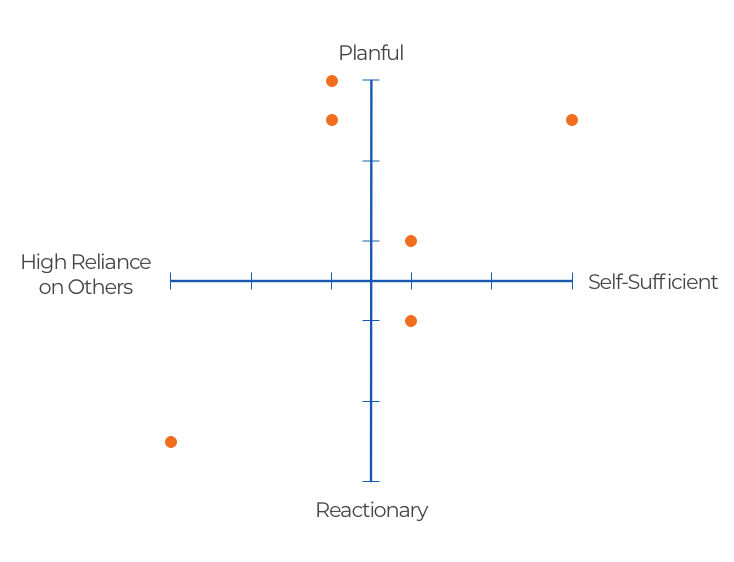
Once the interviewed members were plotted on the matrix, we validated and updated the proto-mindsets based on our findings. In addition, we also socialized them with our stakeholders for feedback.
After validation, we used the mindsets to develop experience maps for each mindset. It was at this stage that I truly appreciated the power of mindsets to understand users--I was better able to empathize with and get into the headspace of the mindset, than I had been previously able to when using personas. This meant more confidence in the identified pain points and recommendations that my team presented to our stakeholders. It also meant that I felt more invested and more keenly how important it was to develop a solid product for transitioning CAF members.
To learn more about my experience with mindsets for CAF TG, see part 1 of this blog: Goodbye personas! How mindsets can help you build empathy and reduce bias.
A big thank you to Eman El-Fayomi! Eman first introduced me to mindsets and provided me with the initial template used by the Canadian Digital Service, as well as the inspiration and guidance to help me get started.
You're here to help residents, and we're here to help you. Interested in how to bring digital tools and skills into your government department? No matter where you are on your digital government journey, learn more about how Code for Canada can support your work.
End of articles list